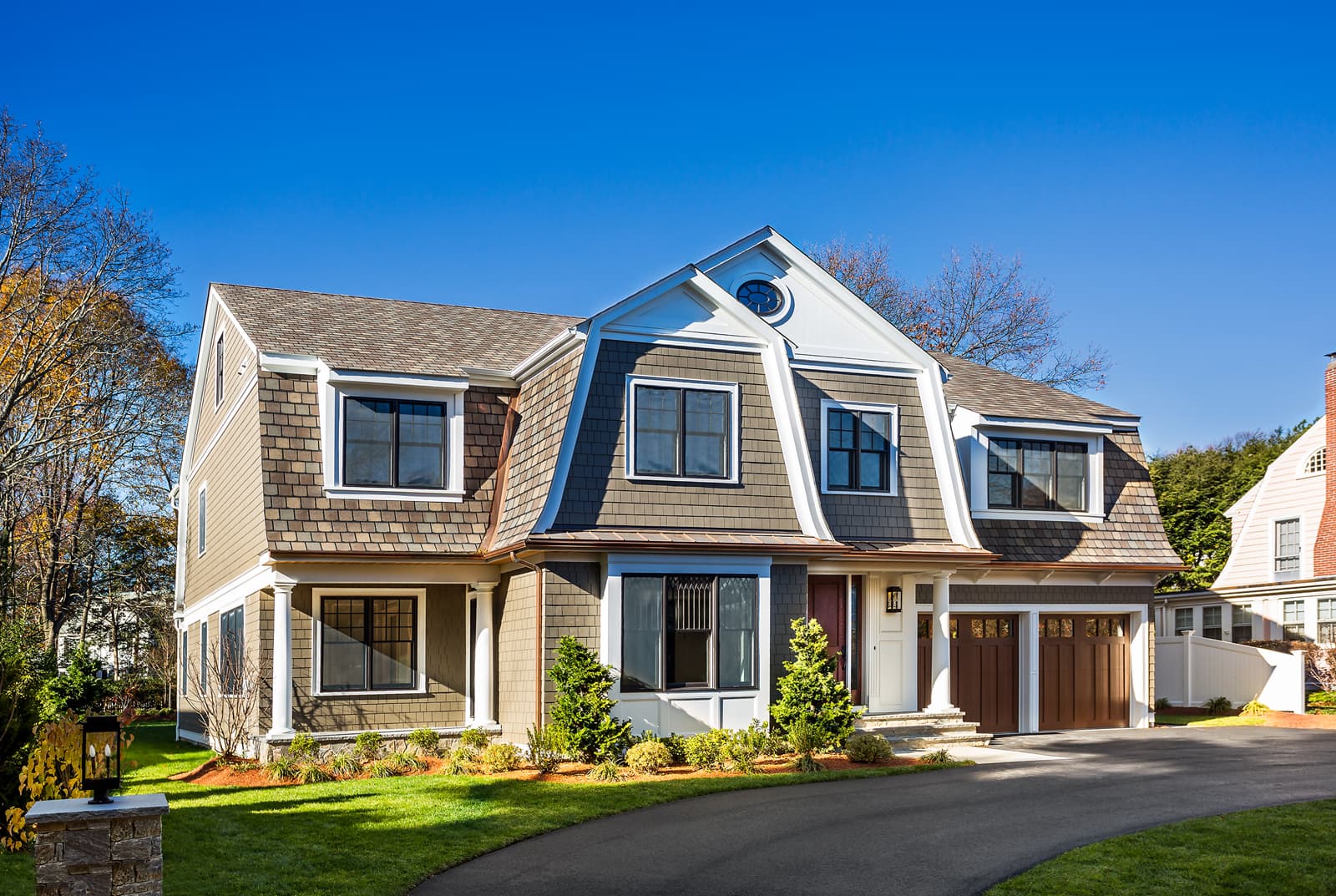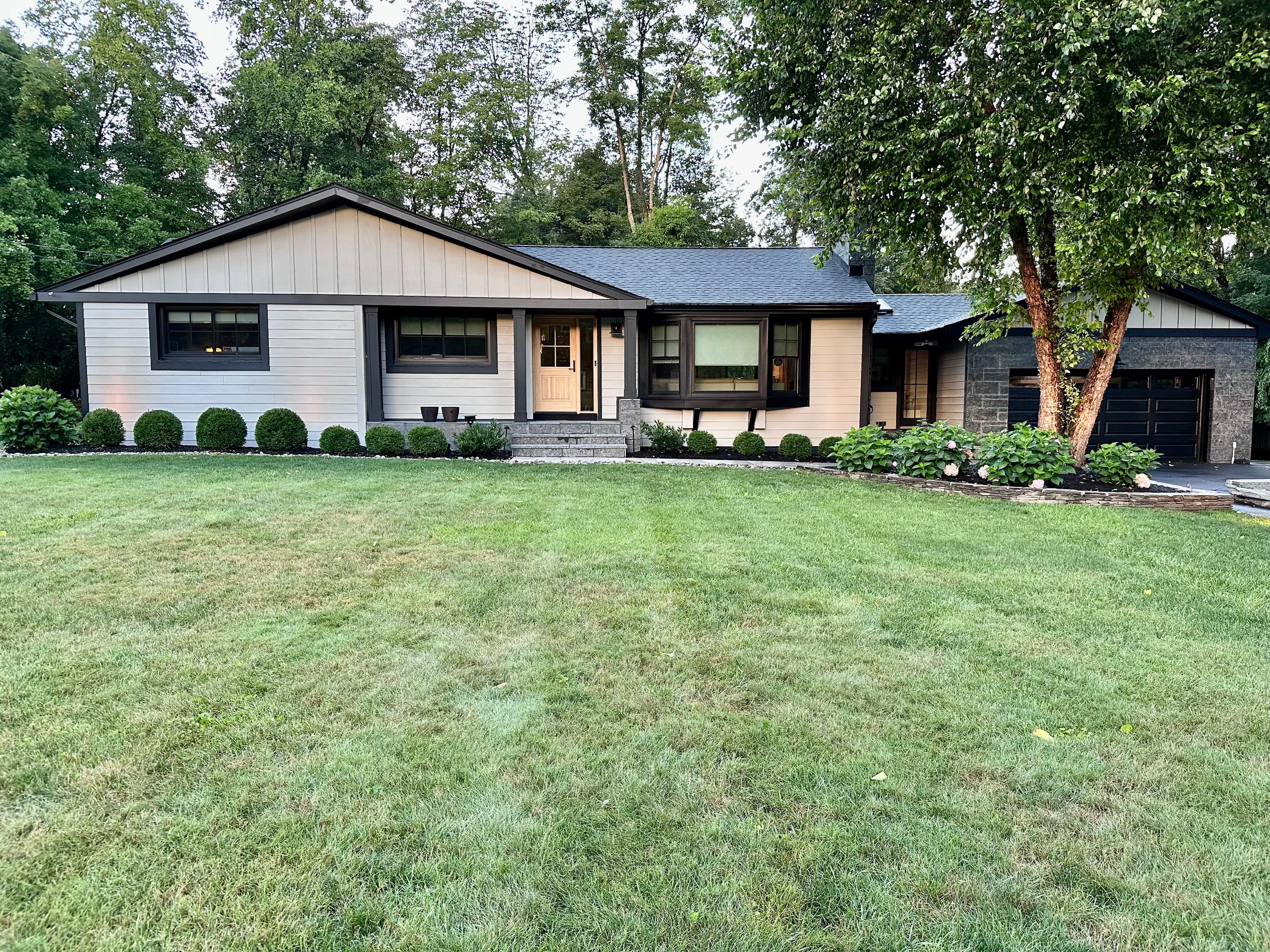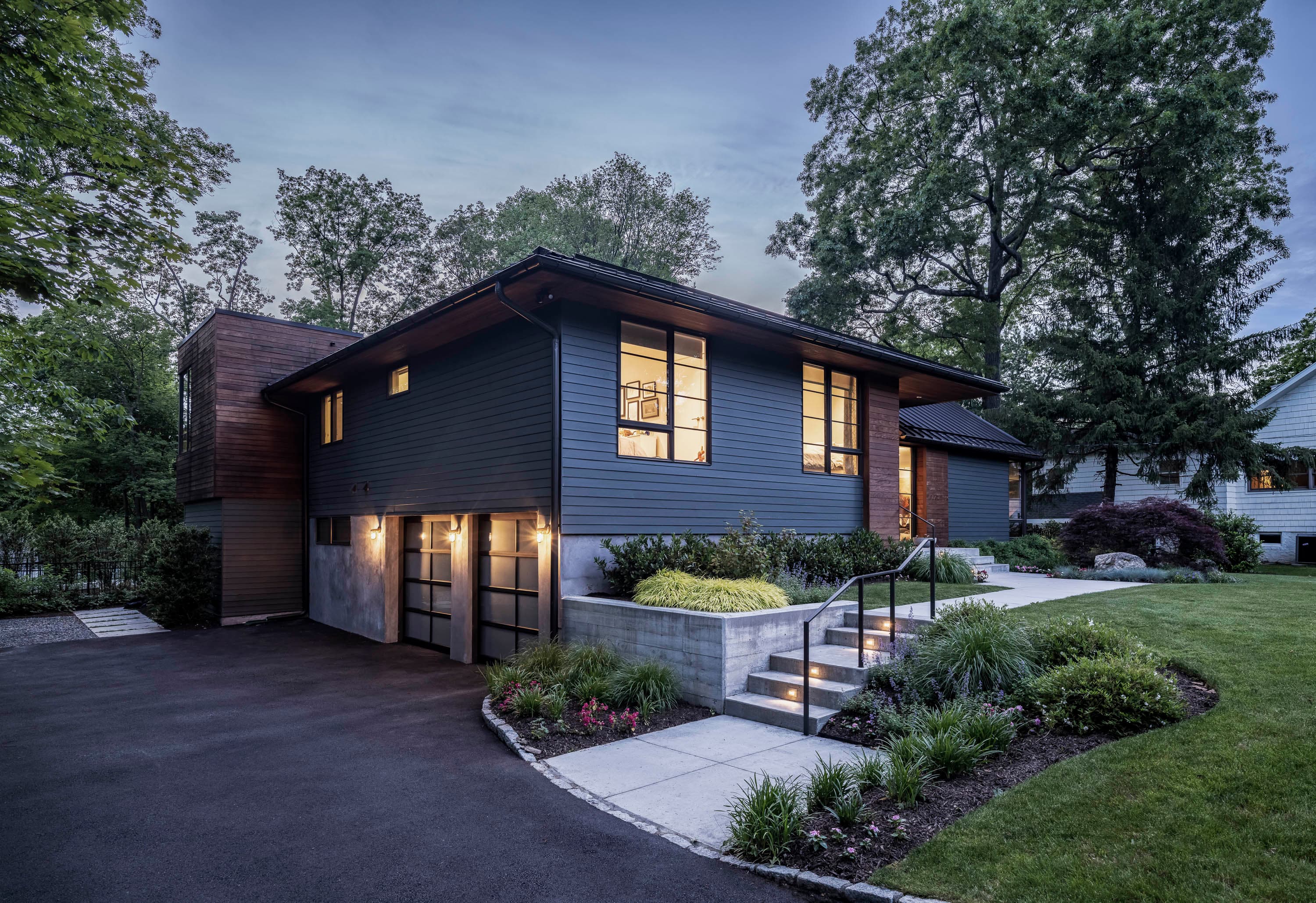Home style guide: Dutch colonial, midcentury modern ranch, and midcentury modern split-level
From Dutch Colonials to midcentury modern ranches, learn about the key elements and unique history of these less common home styles.

Not everyone's home fits the same mold. If your home isn't a popular architectural style, it can be difficult to understand which siding styles and colors best fit your house's distinctive character.
In this guide, we'll break down everything you need to know about Dutch Colonial, midcentury modern-style ranch, and midcentury modern-style split-level homes, three less common architectural styles. It's time to embrace the individuality of your home, discover the exterior elements that best suit its style, and start writing the next chapter in your home's story.
STYLE SNAPSHOT: DUTCH COLONIAL
Dutch Colonial homes, most commonly found in the Northeast, were developed in the early 1600s with the arrival of Dutch colonists to that part of the United States. Found in Dutch colonial settlements, particularly the Hudson River Valley and New York, these were originally one-room structures with stone walls and steep roofs, but today, Dutch Colonials can be made with shingles or clapboard. In the late 19th and early 20th centuries, Dutch-style homes experienced a resurgence in popularity, using modern floorplans but keeping traditional Dutch design elements.
Some distinguishing features of Dutch Colonials include a gambrel roof with long, overhanging eaves; a fireplace and chimney; wooden shutters; sash windows; and natural, earthy materials. On the inside, Dutch Colonials typically feel elegant yet casual.
Fun Fact: Dutch Colonials often feature a "Dutch door," which is a front door that's horizontally split to allow only the top half (or bottom half) to be opened at one time.
Dutch Colonial Siding Ideas
Most Dutch Colonials have shingle siding, and in this case, Hardie® Shingle siding is a great option. Hardie Shingle comes as classic straight-edge panels or staggered-edge panels, depending on how refined or laid back you'd like your home to look. With Hardie® siding, you can get the distinct look of cedar shake without the maintenance and wear.
Another, more modern option for Dutch Colonials is Hardie® Plank lap siding. James Hardie's Select Cedarmill® finish has a natural cedar look that mimics the timeless wood texture of a Dutch Colonial with an added sleekness.
Dutch Colonial Color Options
As Dutch Colonial homes are often classic and unassuming, we recommend sticking to neutral colors. Whites, grays, and other natural hues that mix well with the style's wood and stone elements are best suited for a Dutch Colonial.
Not sure which color fits your home best? Experiment with the Hardie™ Designer, powered by Hover, to test some of your favorite options!
STYLE SNAPSHOT: MIDCENTURY MODERN-STYLE RANCH
Midcentury modern ranch homes rose to popularity in the 1930s and 1940s in southern California, inspired by actual ranches and Prairie-style homes, which emphasized low-to-the-ground horizontal layouts. Midcentury modern ranches became even more popular after World War II, when veterans were returning home to growing families and shrinking budgets.

Midcentury modern-style ranches can be defined by a simple, one-level design with attached garages, low-pitch roofs, picture windows facing the front yard, and asymmetrical gables on the home's facade. Today, homeowners are leaning into this style's funky tendencies, painting brick exteriors and adding natural wood panels to their home's attached carport.
Fun Fact: Ranch-style homes are nicknamed "ramblers" due to the way they sprawl across their lots.
Midcentury Modern Ranch Siding Ideas
These homes often have sidings with natural textures, specifically brick. To give your midcentury ranch a more modern look without sacrificing the traditional ranch feeling, consider the Hardie™ Architectural Collection. The smooth finish of the fine flat-wall profiles creates clean lines that will make your ranch home the envy of the block.
Midcentury Modern Ranch Color Options
When it comes to color in modern-style homes, the sky is the limit. Why not paint your midcentury ranch's brick exterior blue, white, or gray? As the ranch style was initially inspired by farm life, earthy browns and reds are also popular choices.
Review James Hardie's Statement Collection® products that come in pre-finished colors for some nature-inspired hues.
STYLE SNAPSHOT: MIDCENTURY MODERN-STYLE SPLIT-LEVEL
In the 1950s, split-level homes gained widespread popularity across the United States. As with the midcentury ranch homes, soldiers coming home from World War II were moving to the suburbs, and split levels offered more substantial, stacked designs built on smaller lots.

With split levels, you'll often see partial flights of stairs linking each of the home's multiple levels, a lower-level integrated garage or carport, a partial sub-basement, low-pitched roofs, and large living areas. Today, you'll see the highest concentration of split-level homes in the Midwest, but they are still fairly common across the country.
Fun Fact: Split-level homes are often tri-level or quad-level, creating separate living areas that make the house feel larger and each area feel more private — perfect for families with growing kids!
Midcentury Modern Split-Level Siding Ideas
Most split-level homes, regardless of their interior style, feature plank lap siding. However, for homeowners wishing to lean into the modern aesthetic of their midcentury split level, we recommend trying Hardie® Panel vertical siding. A board and batten look can transform your home from a run-of-the-mill split-level into a modern gem.
Midcentury Modern Split-Level Color Options
Shades of blue are a popular choice for any modern-style home, and split levels are no exception. As split-level homes were most popular in the 1970s, they're typically painted in beige, light yellow, or green. Adding a fresh coat of navy blue, bright white, or charcoal can instantly take your home into the 21st century.
If you're feeling overwhelmed with options, the Hardie™ Designer, powered by Hover®, can help you narrow down your color and siding options.
GET INSPIRED BY YOUR HOME'S STYLE
Unique architectural styles are something to celebrate, even if your home doesn't look like every other one on the block. Now that you understand the differences between these three atypical home styles, it's time to decide which exterior colors and textures work best for you.
If you're seeking more home design ideas, check out our inspiration guide. Chock-full of photos of homes of all styles, this curated collection is sure to spark creativity!
Then, when you're ready, head over to the James Hardie product catalog for a full list of siding, trim, and exterior colors to make your home design dreams come true.